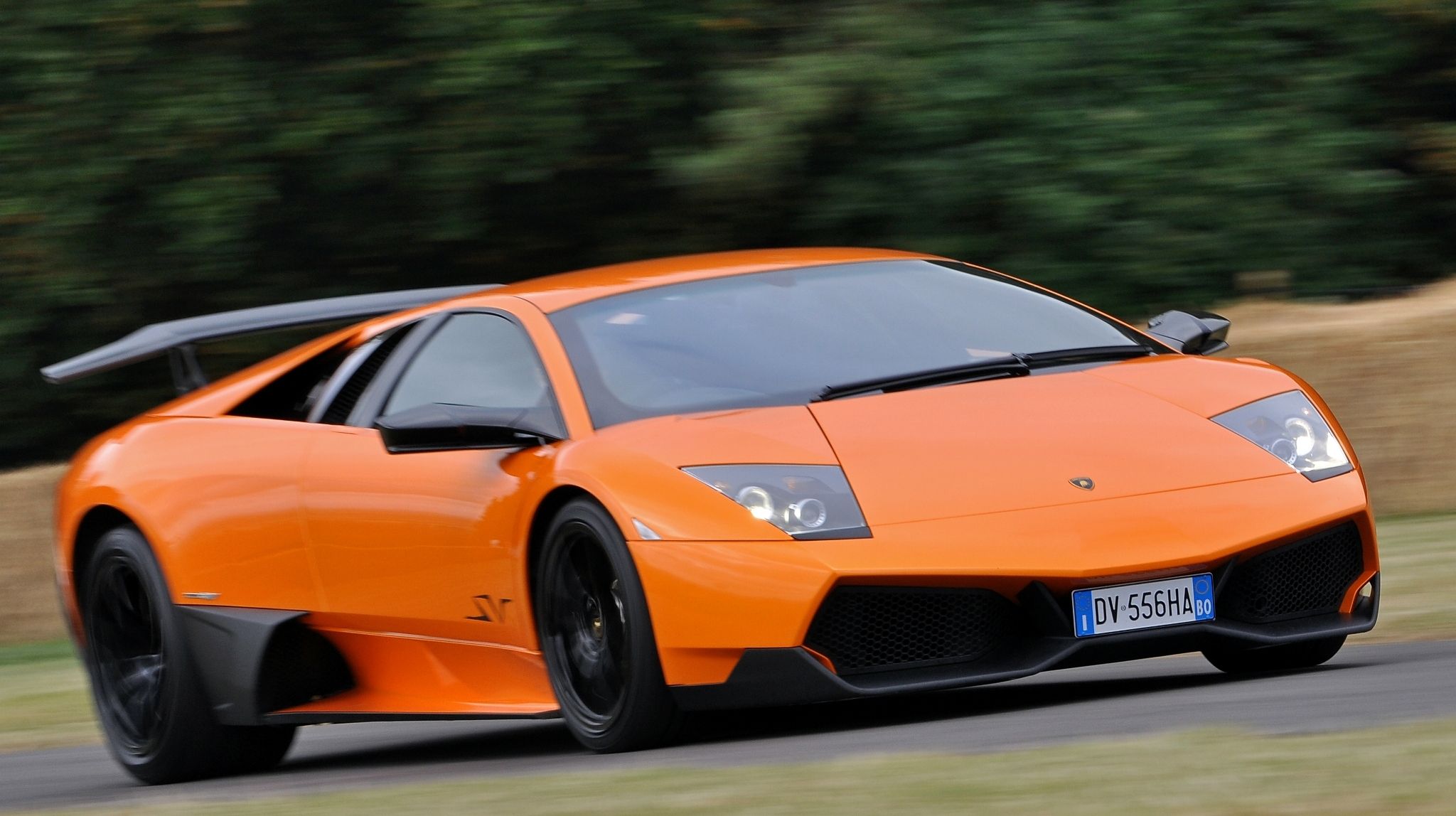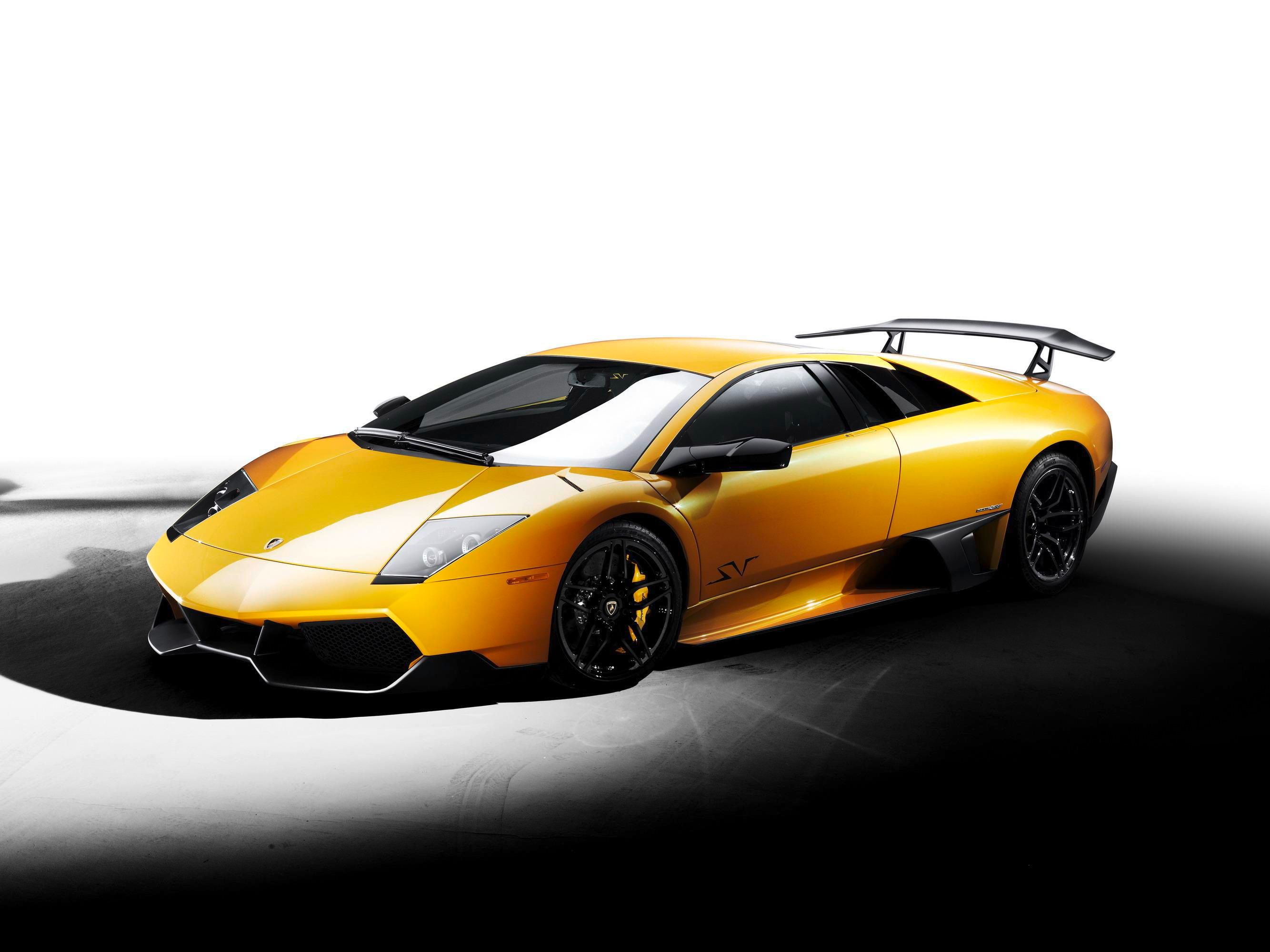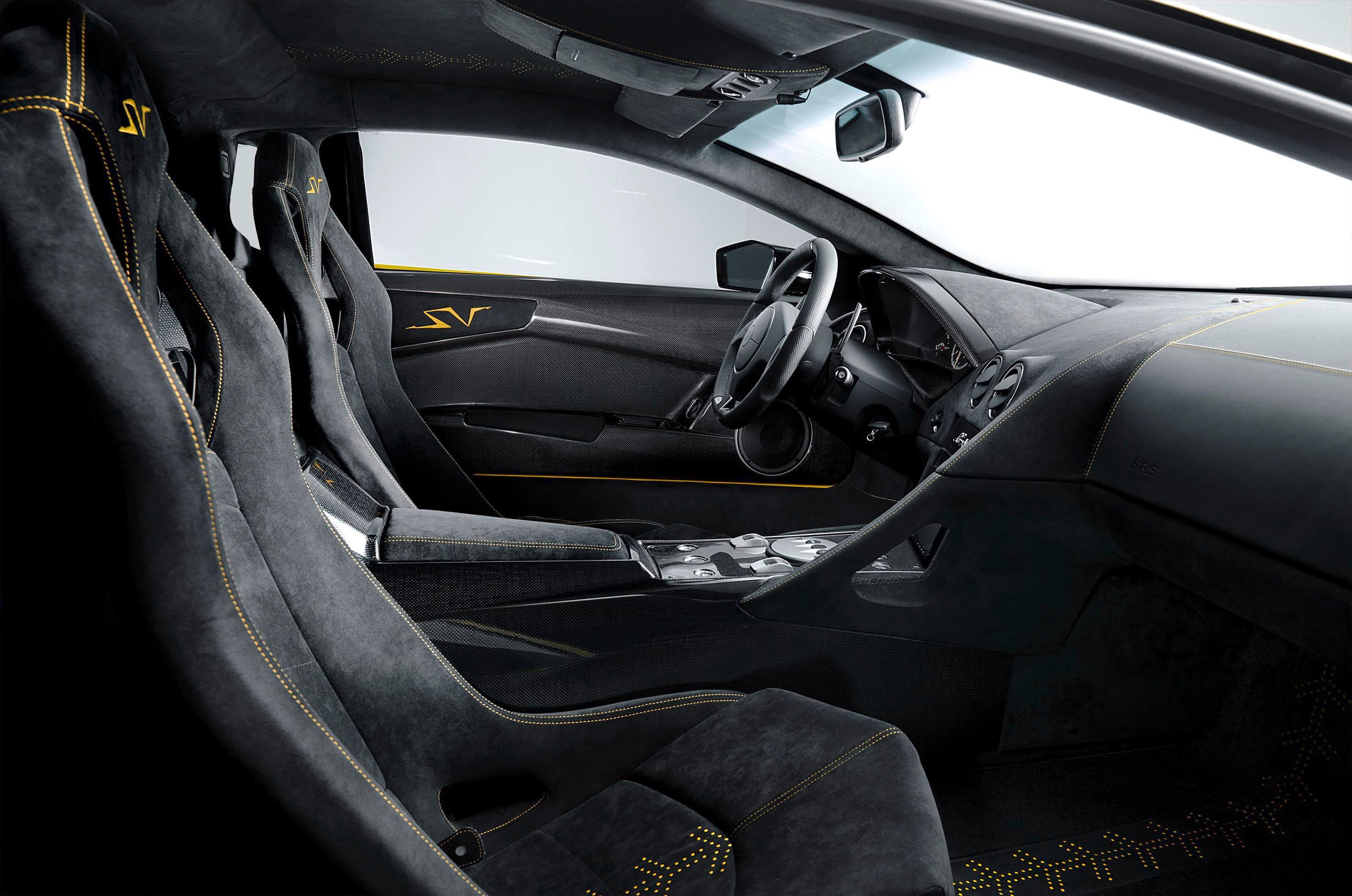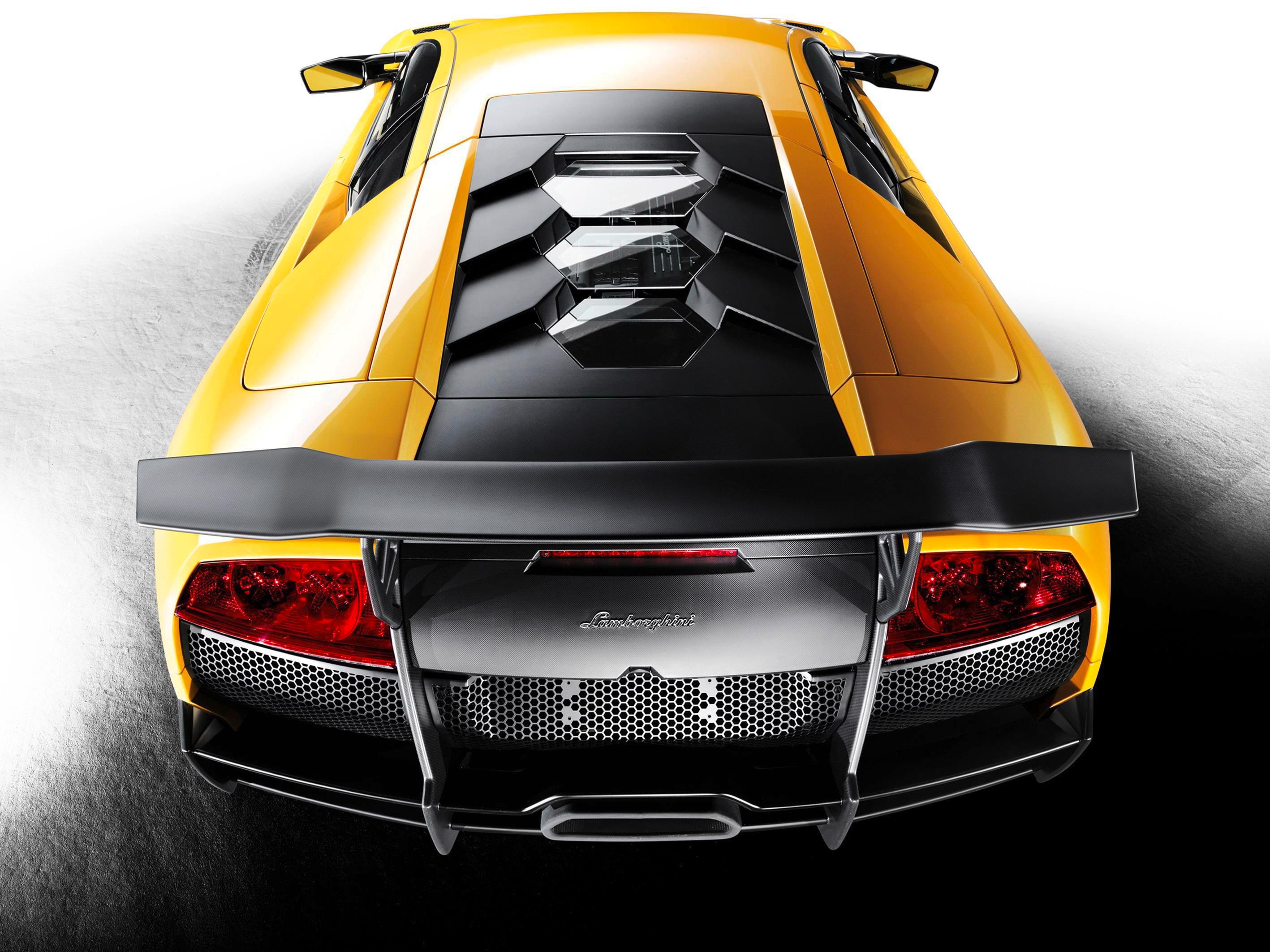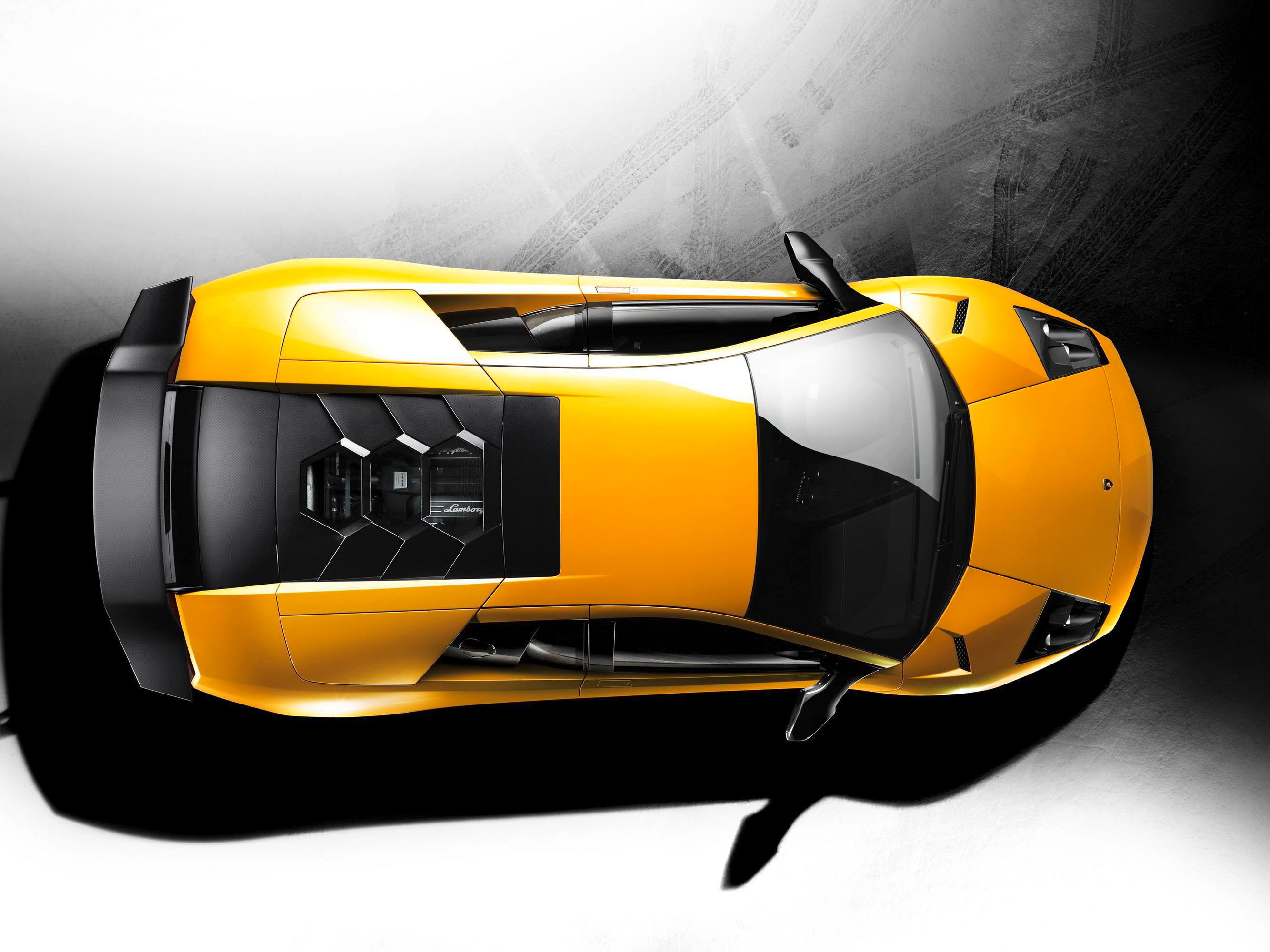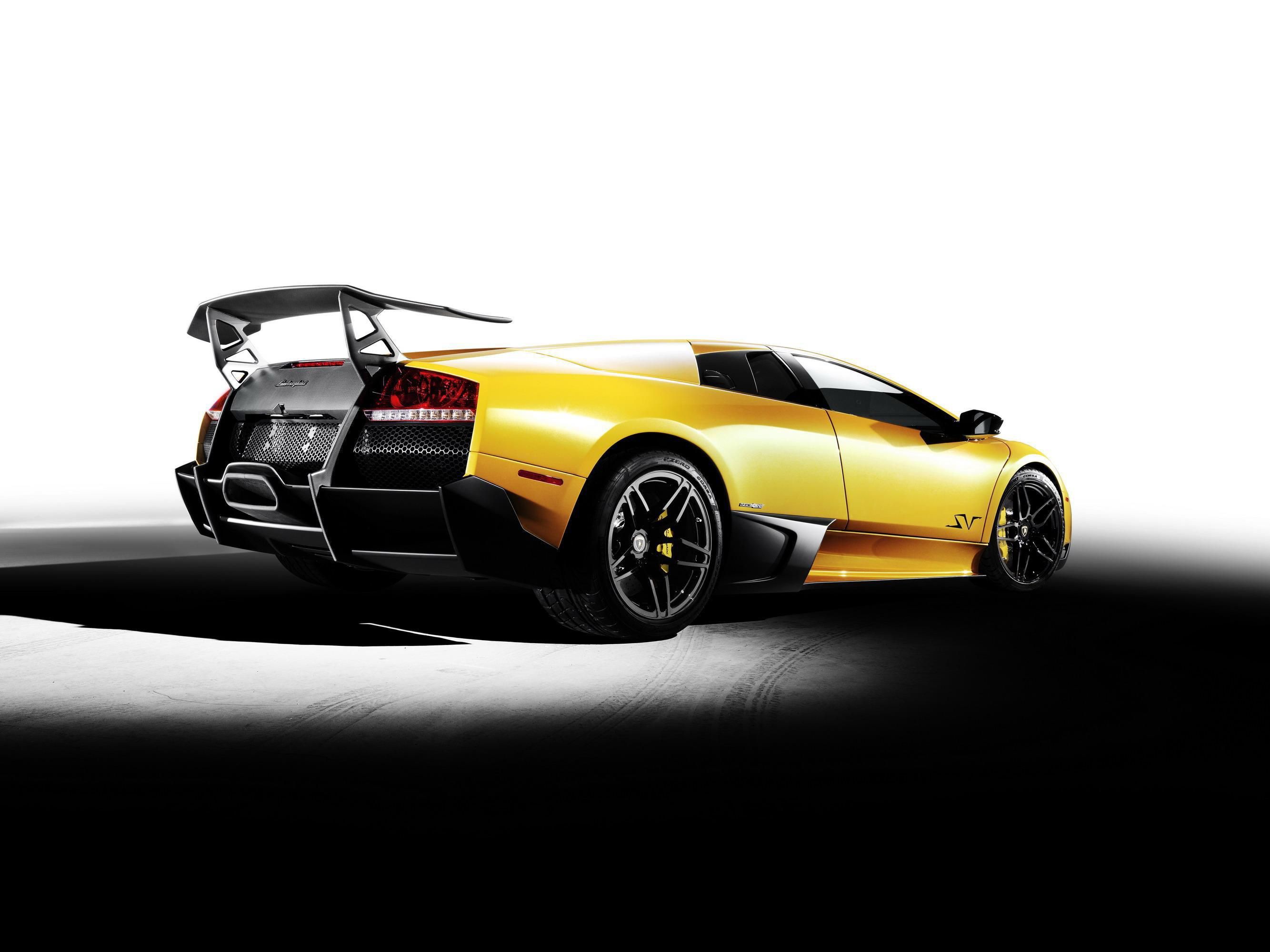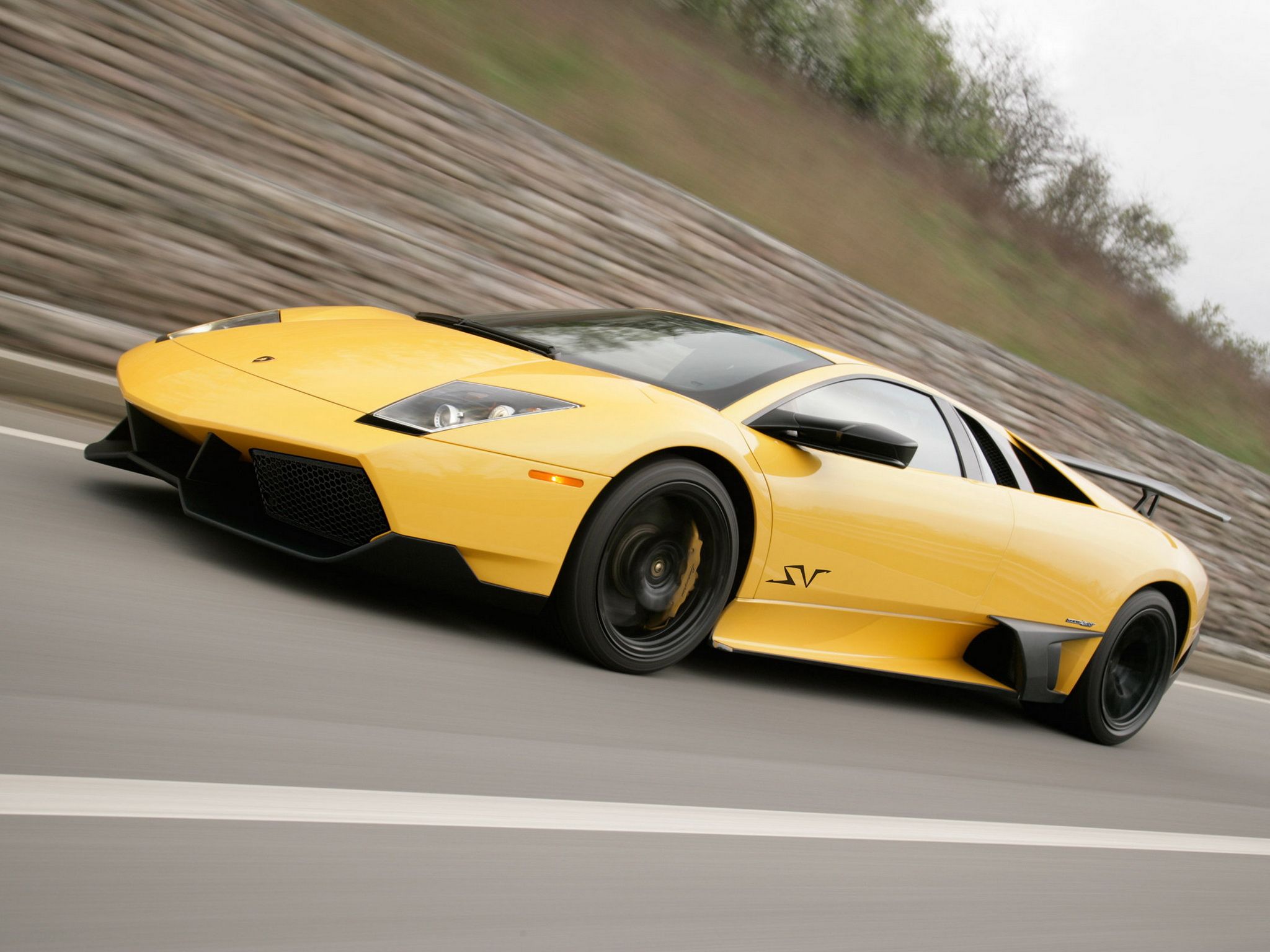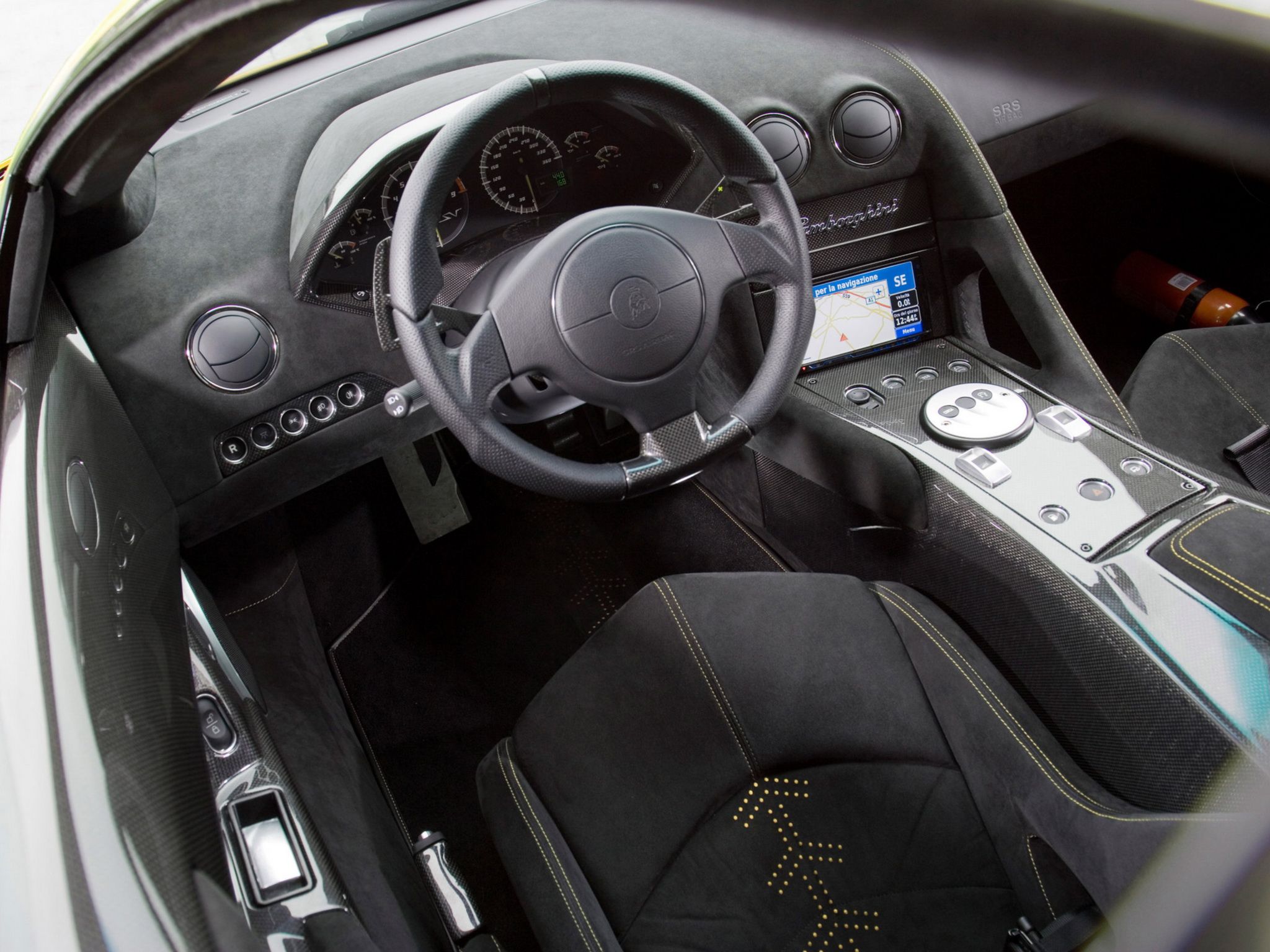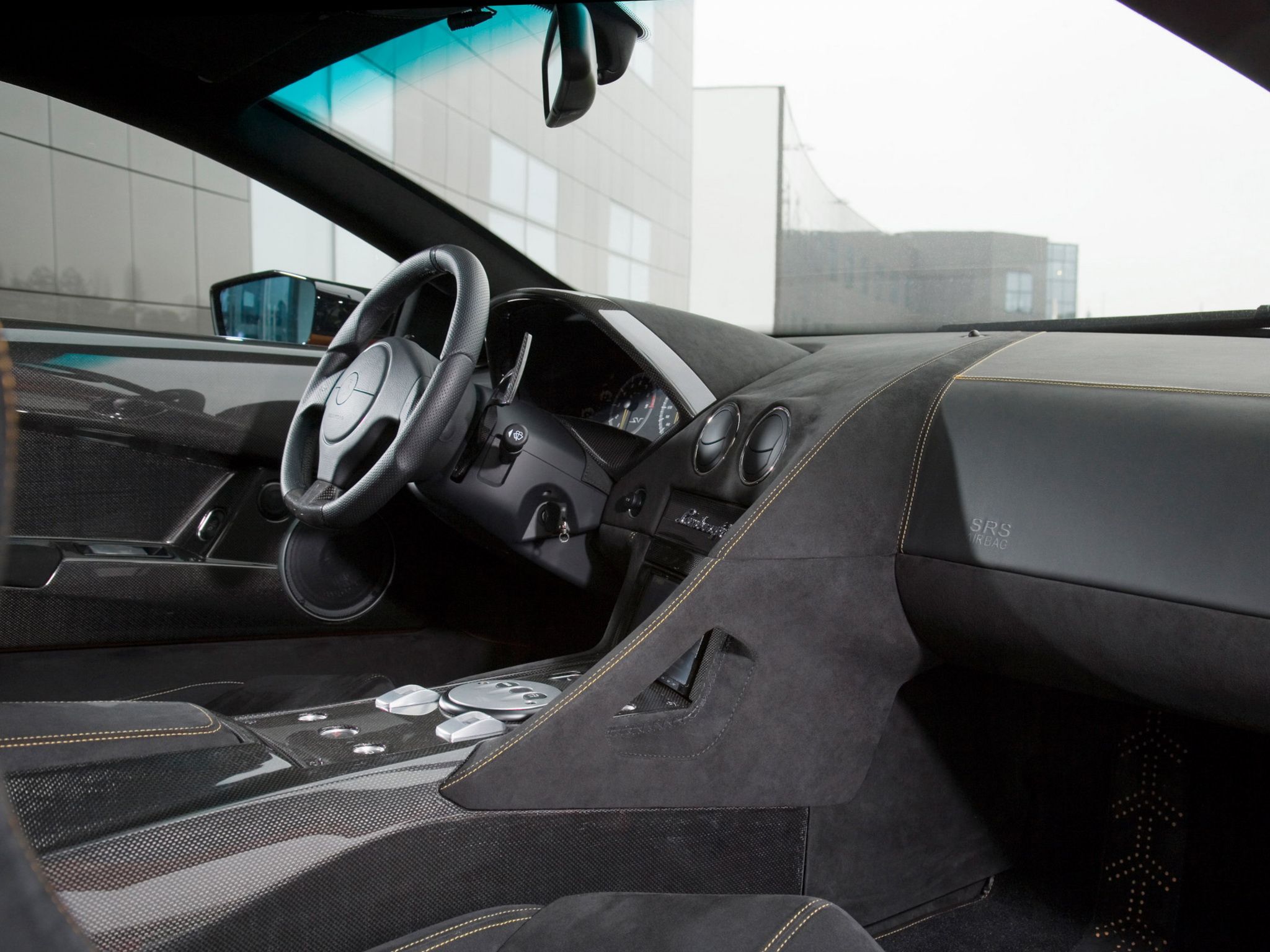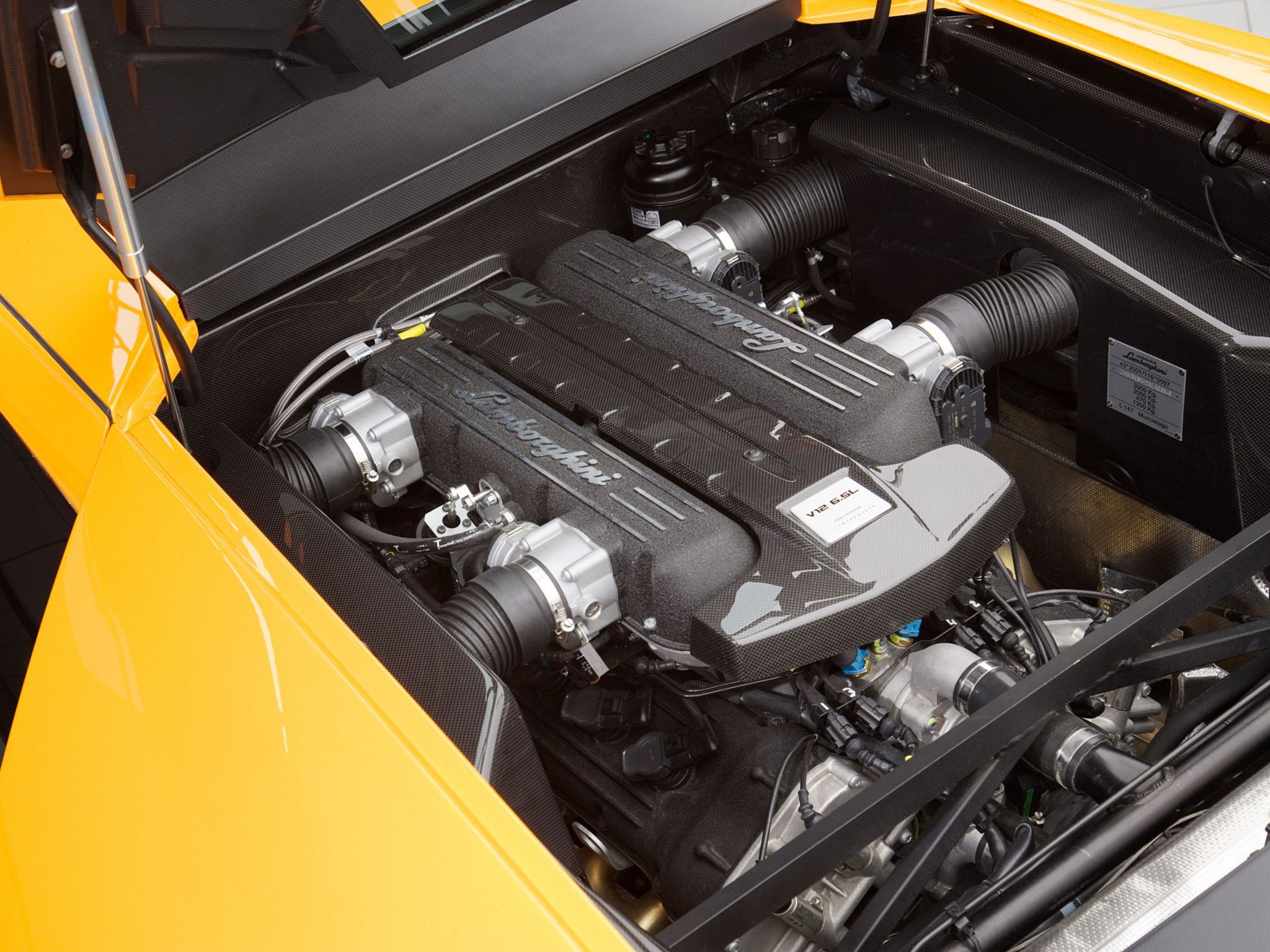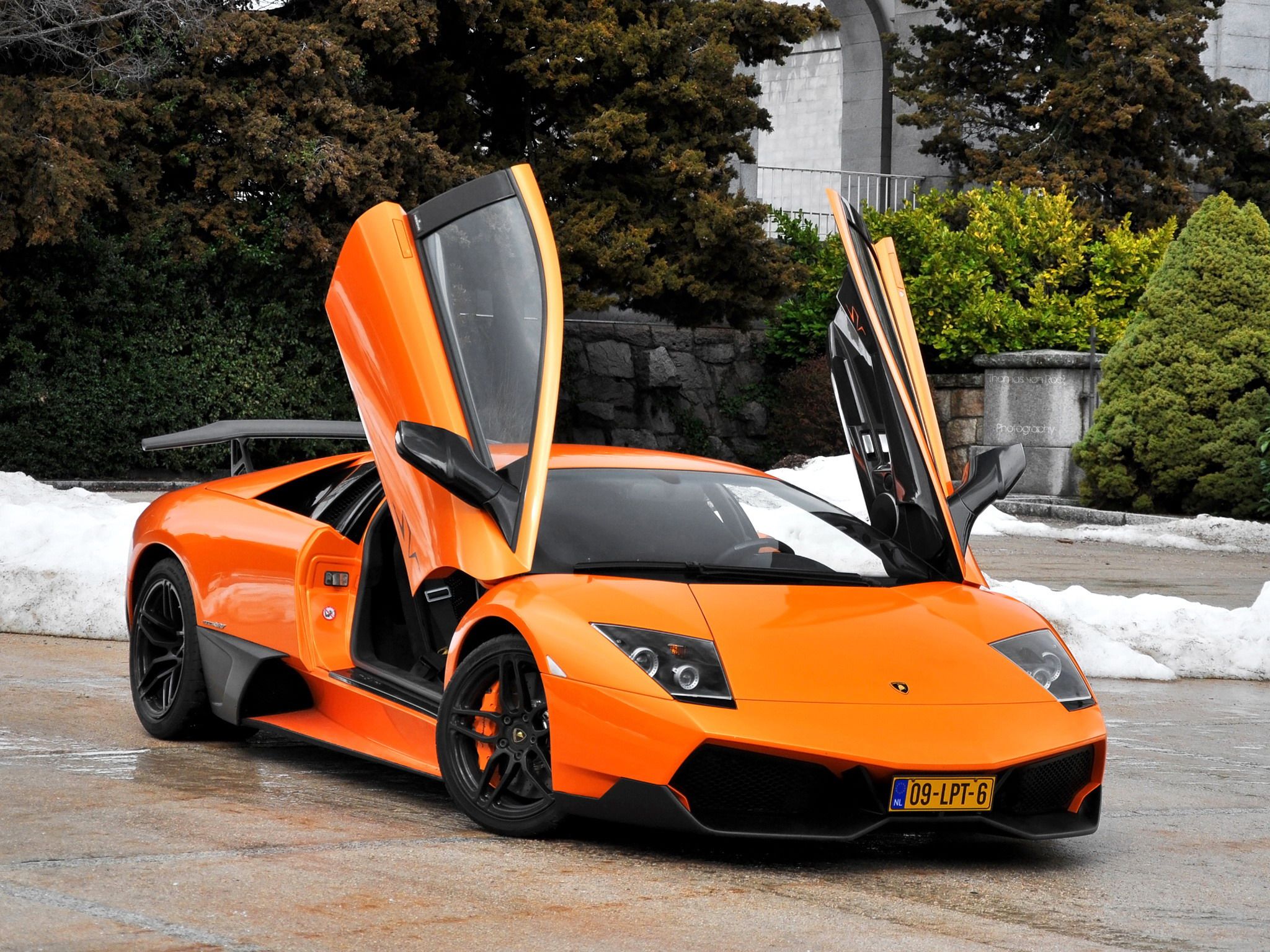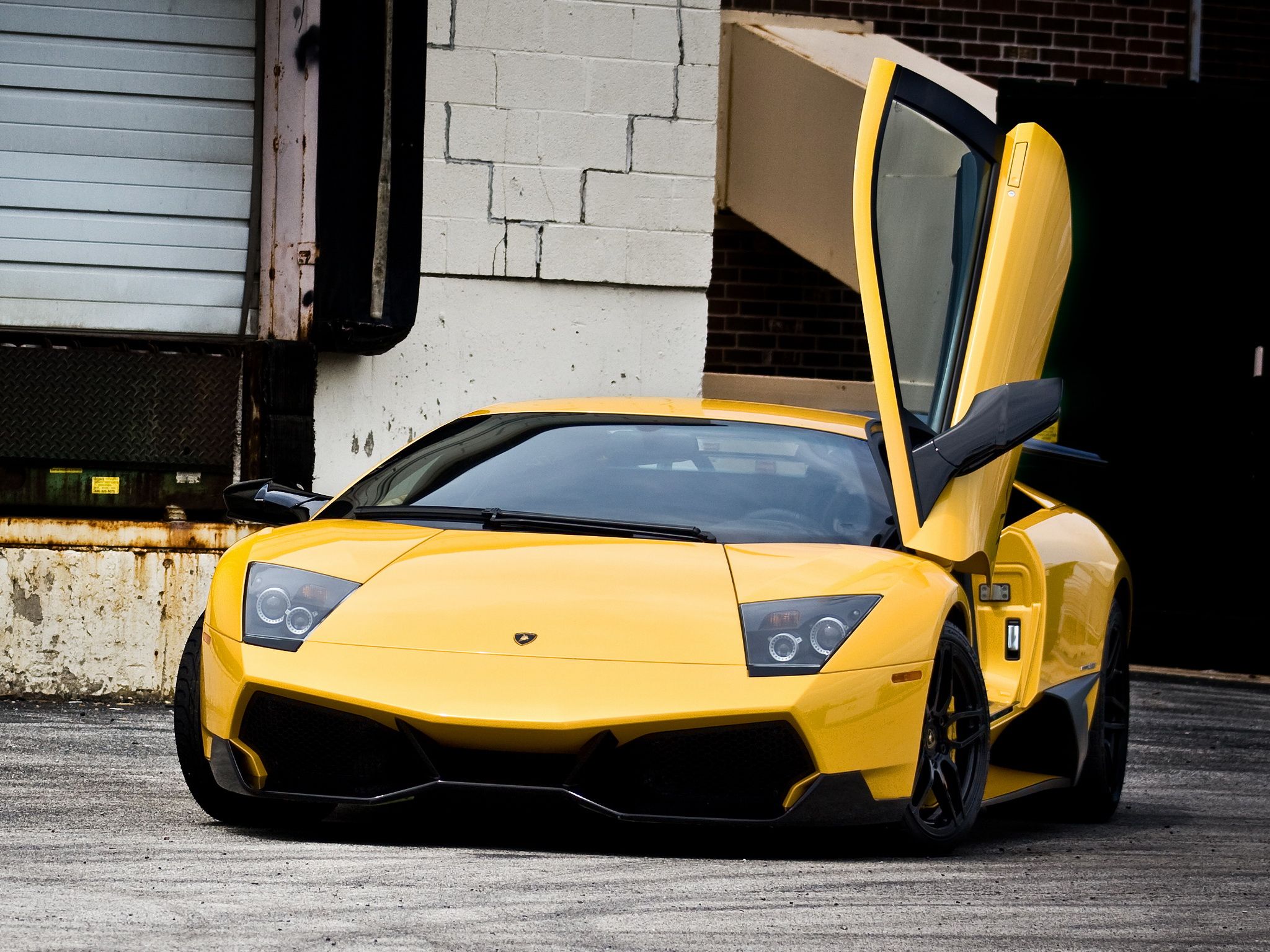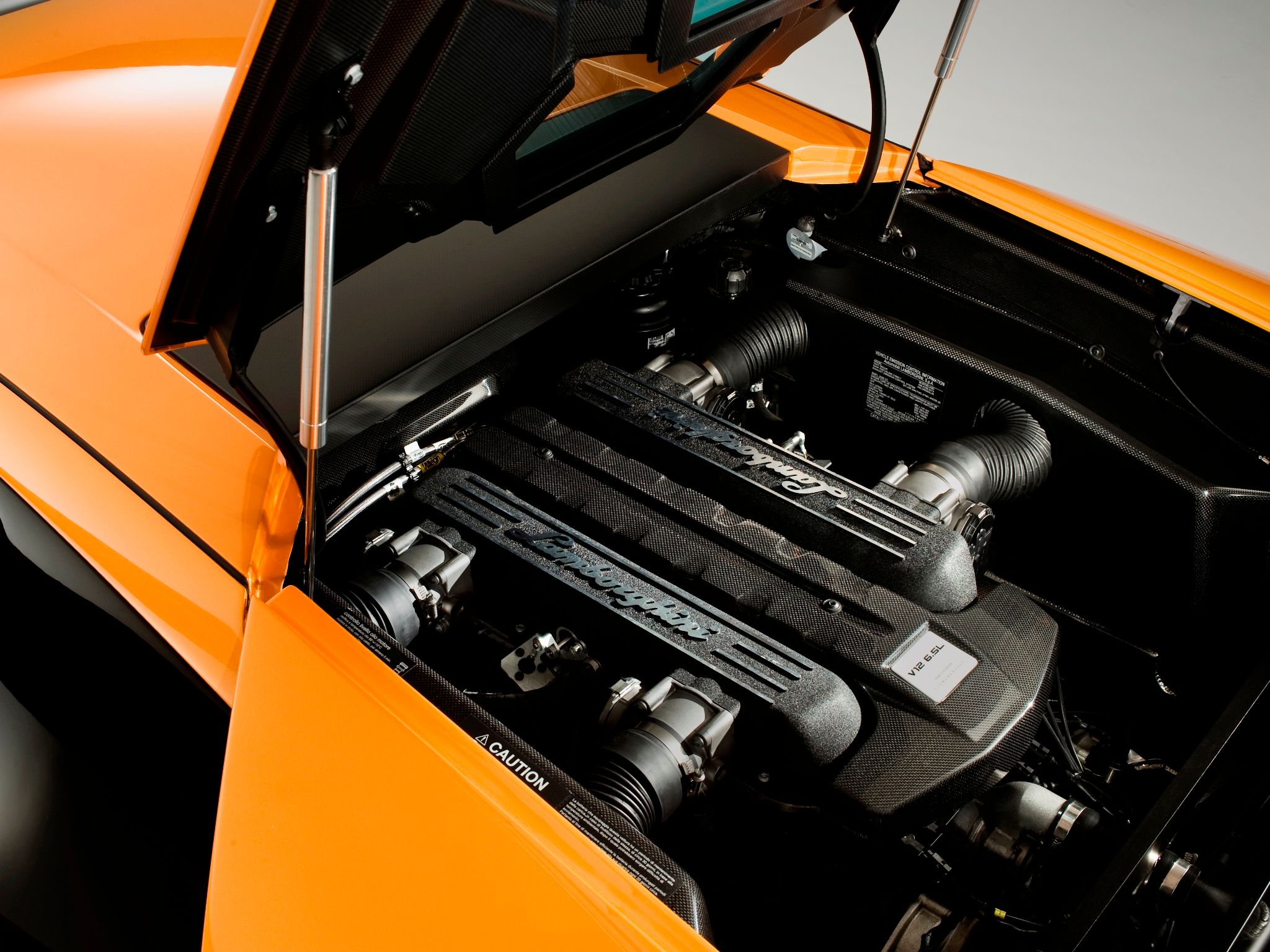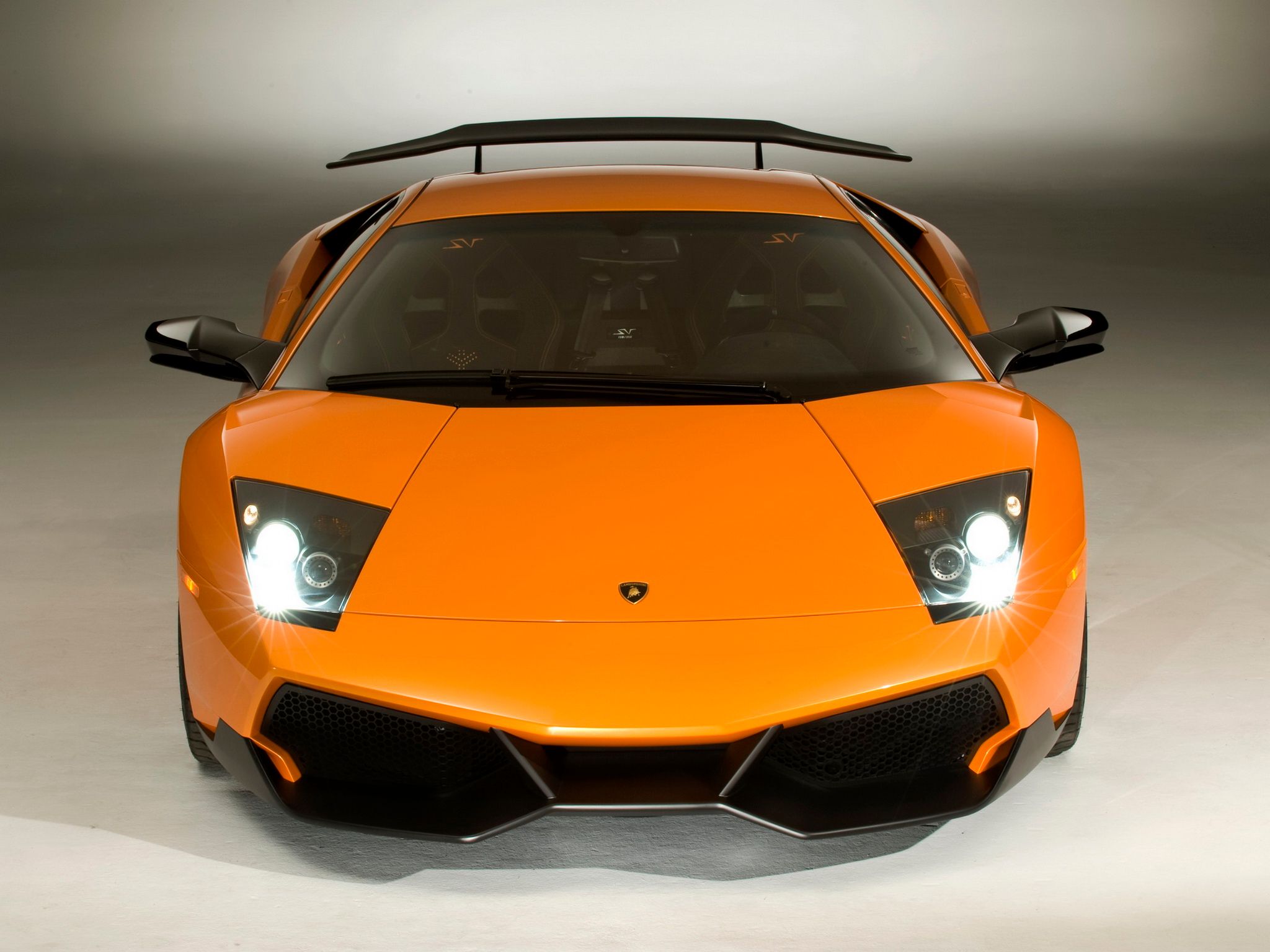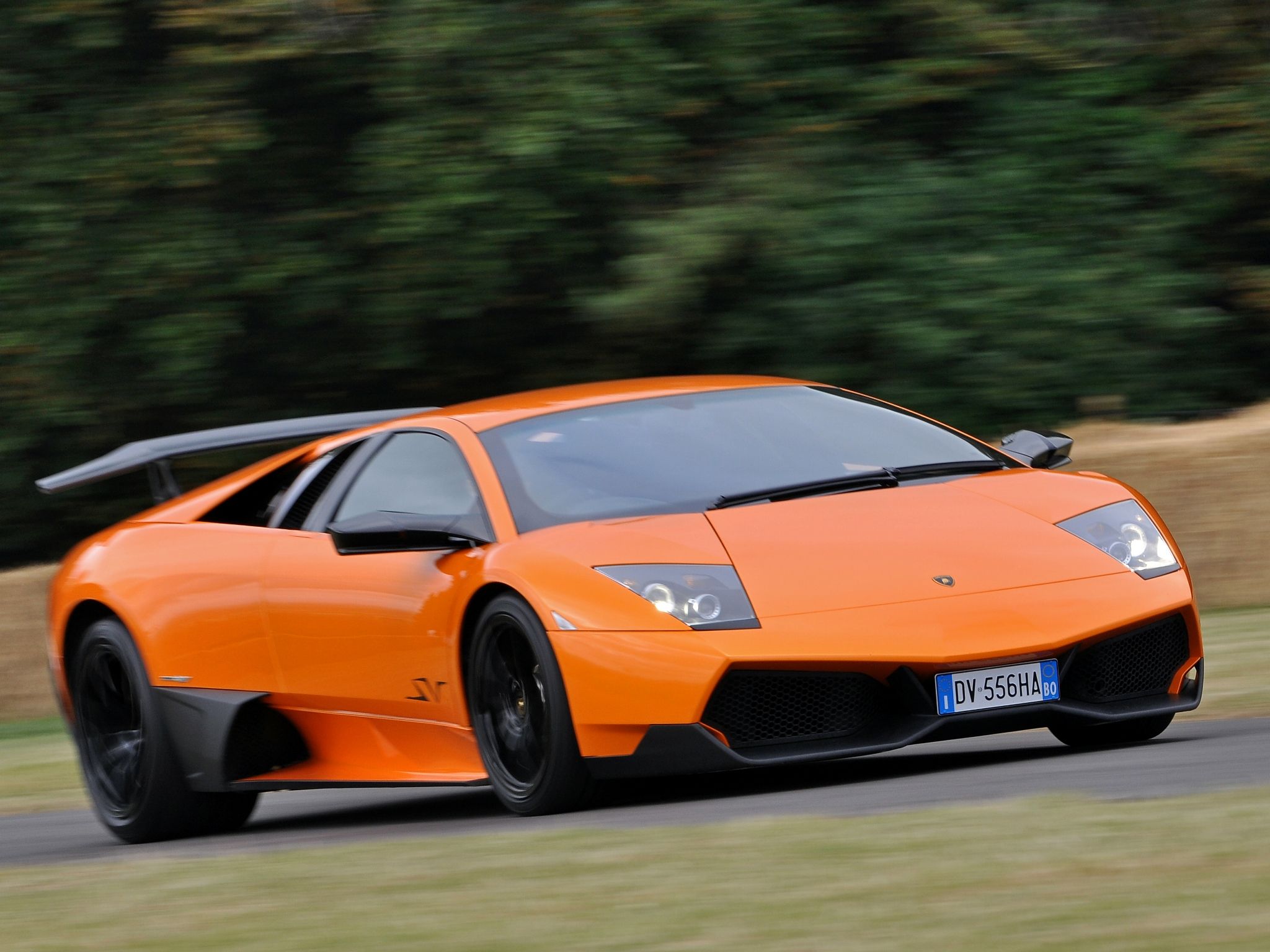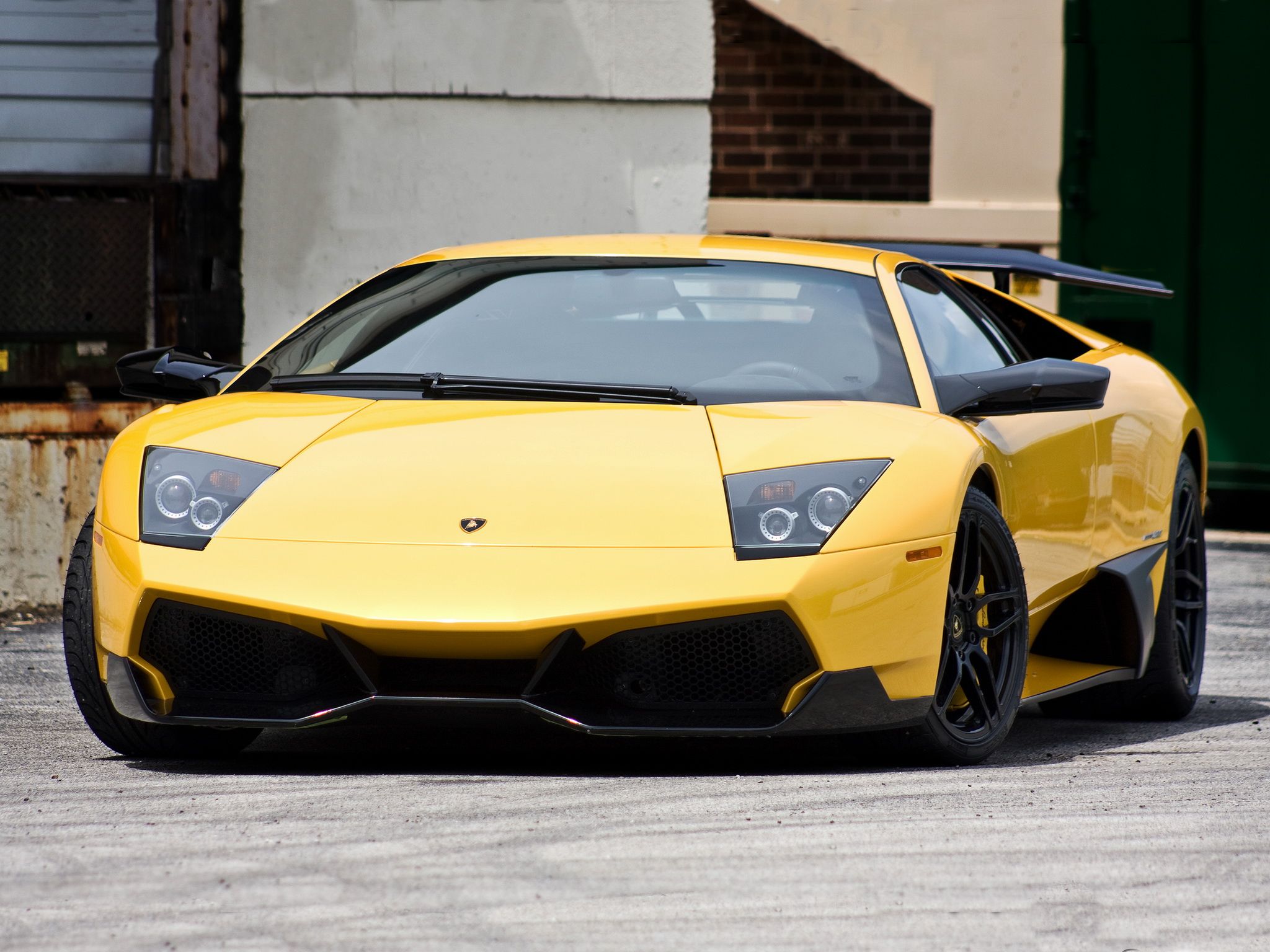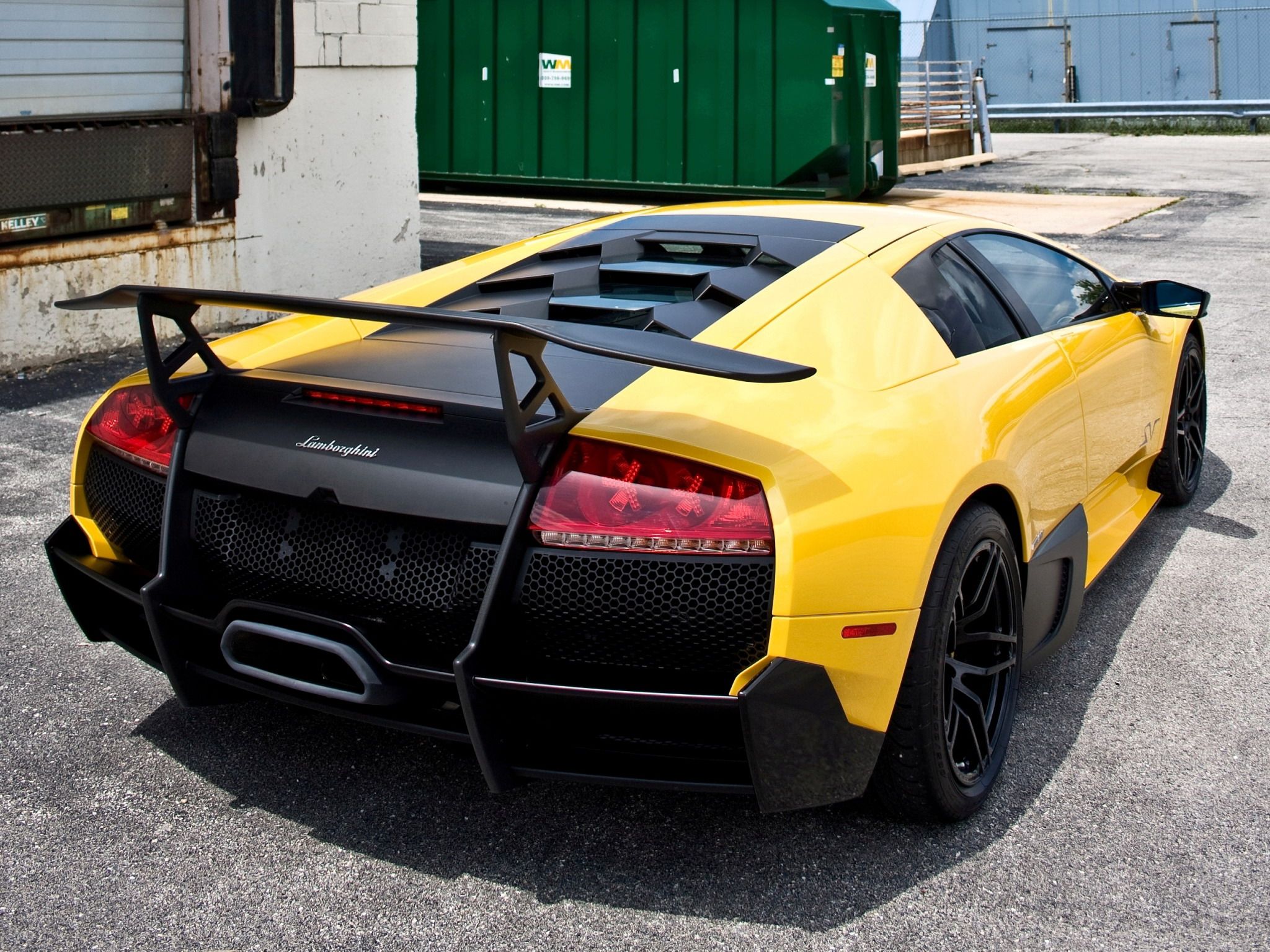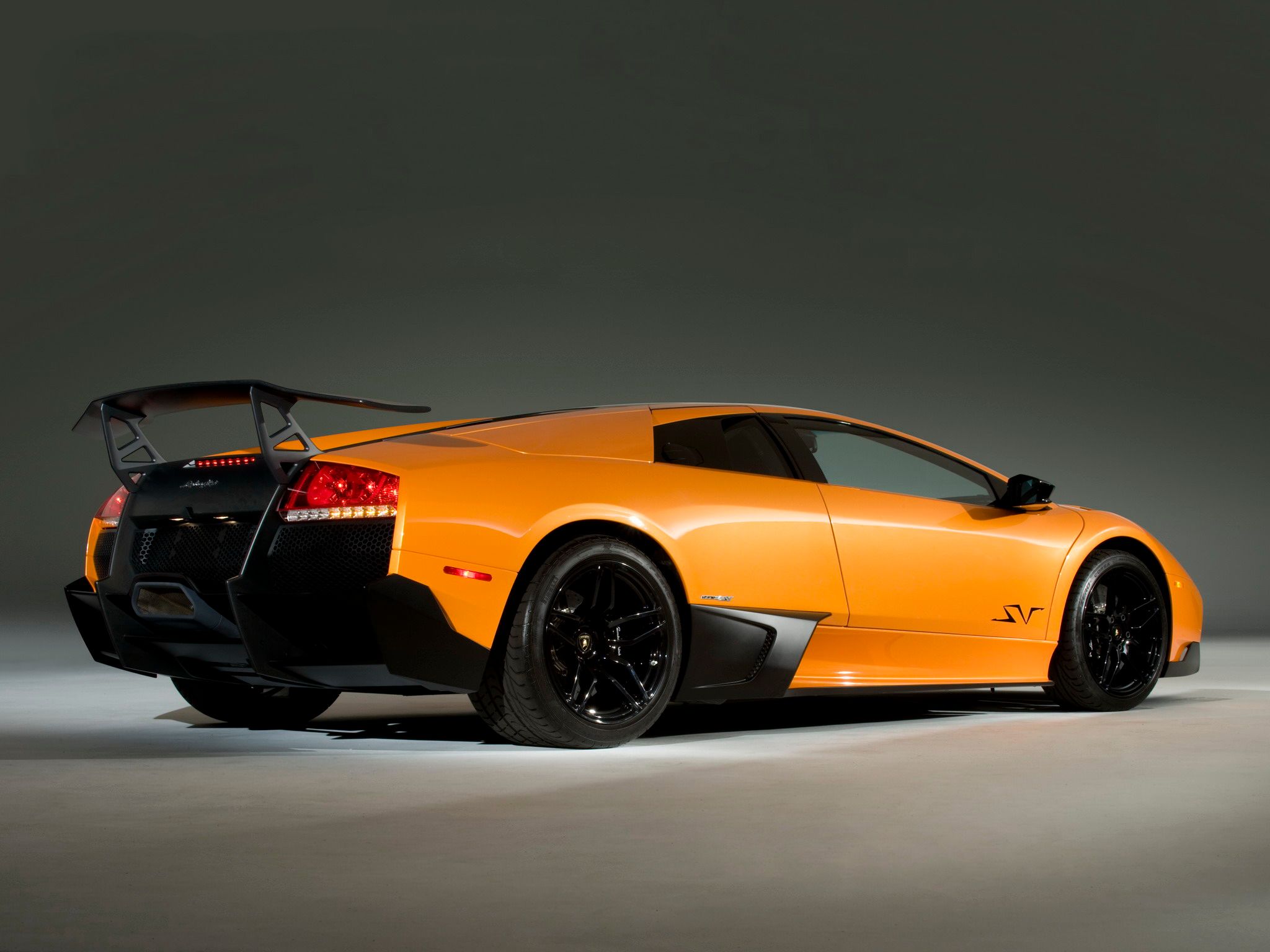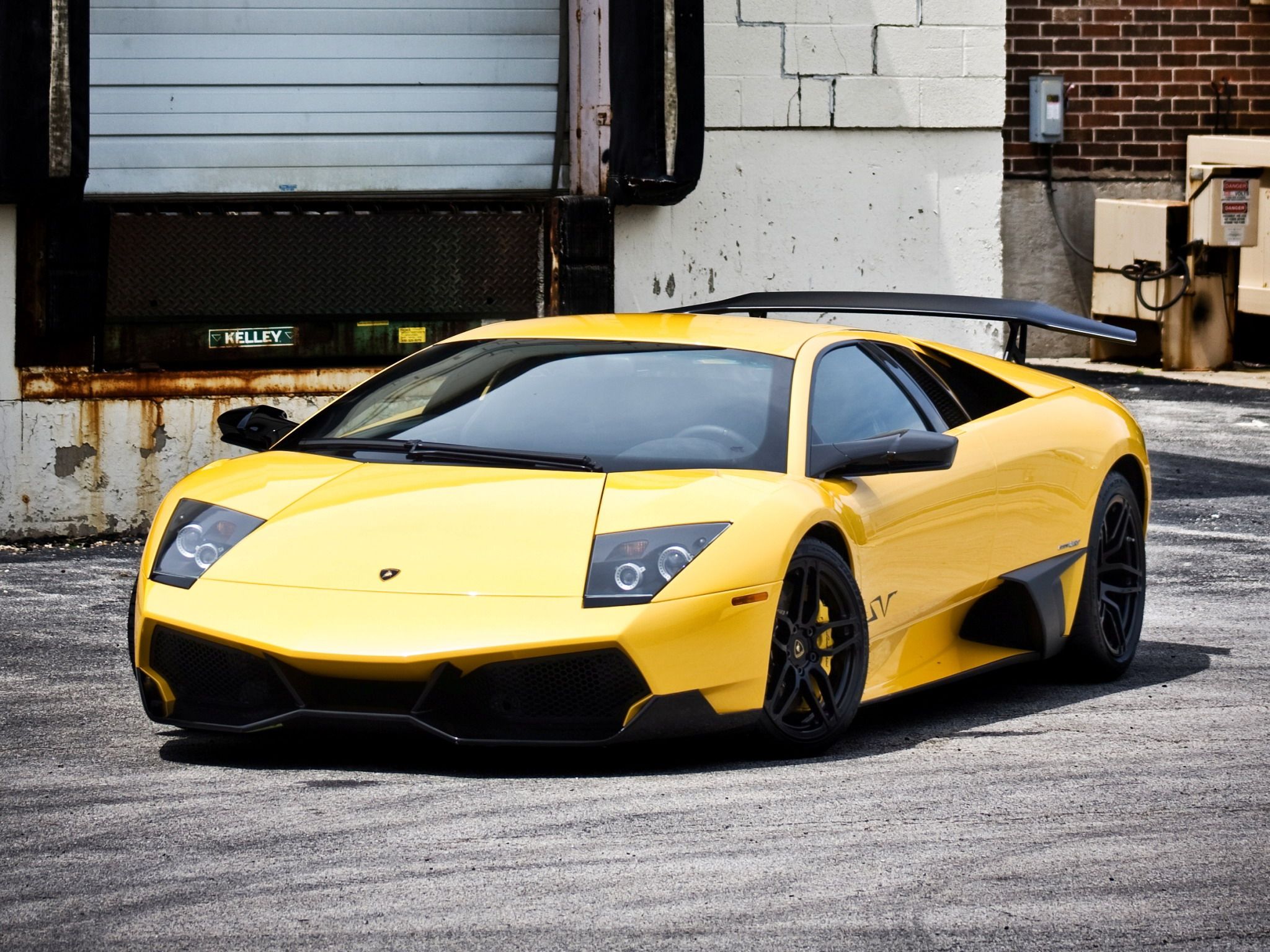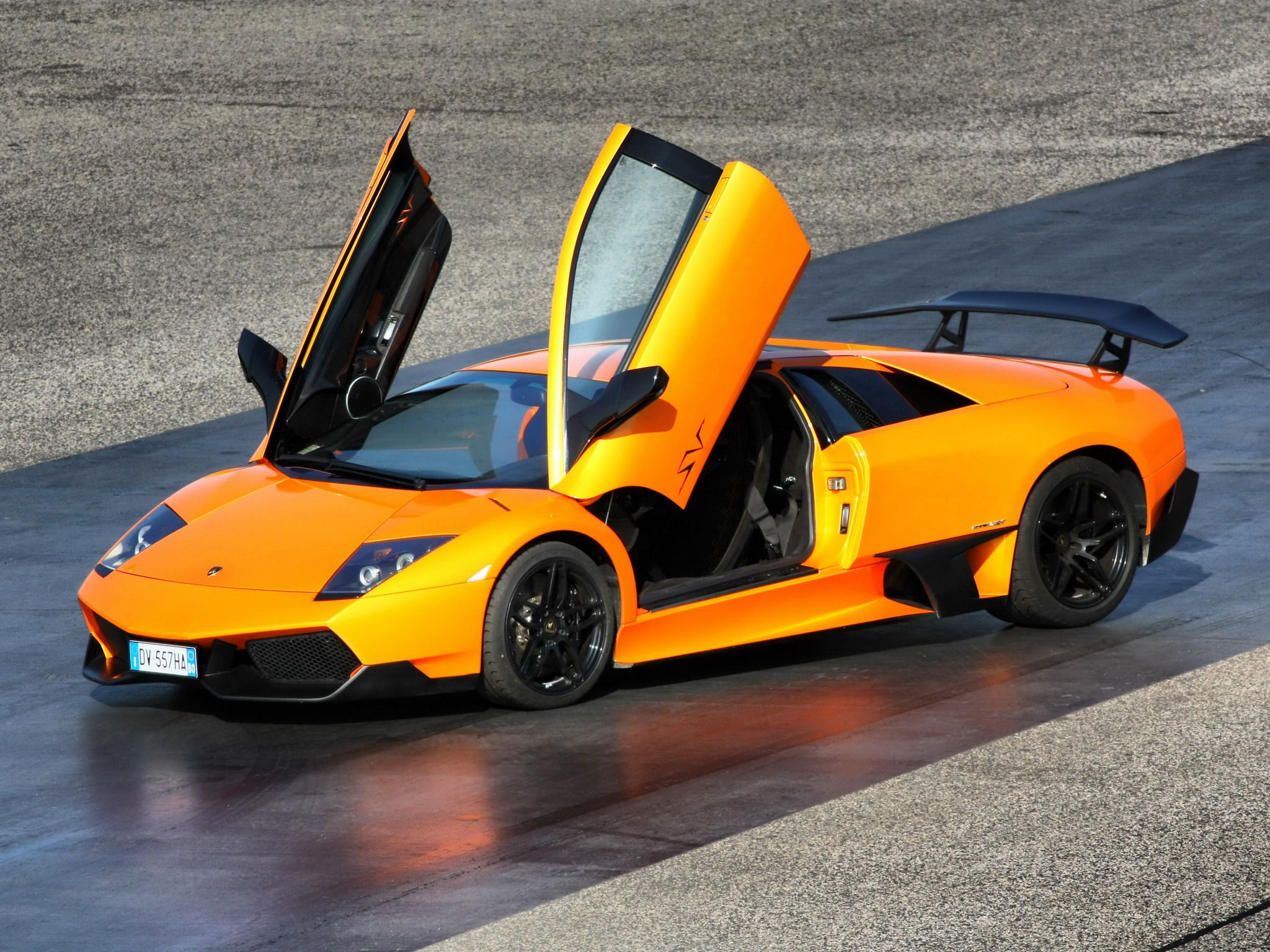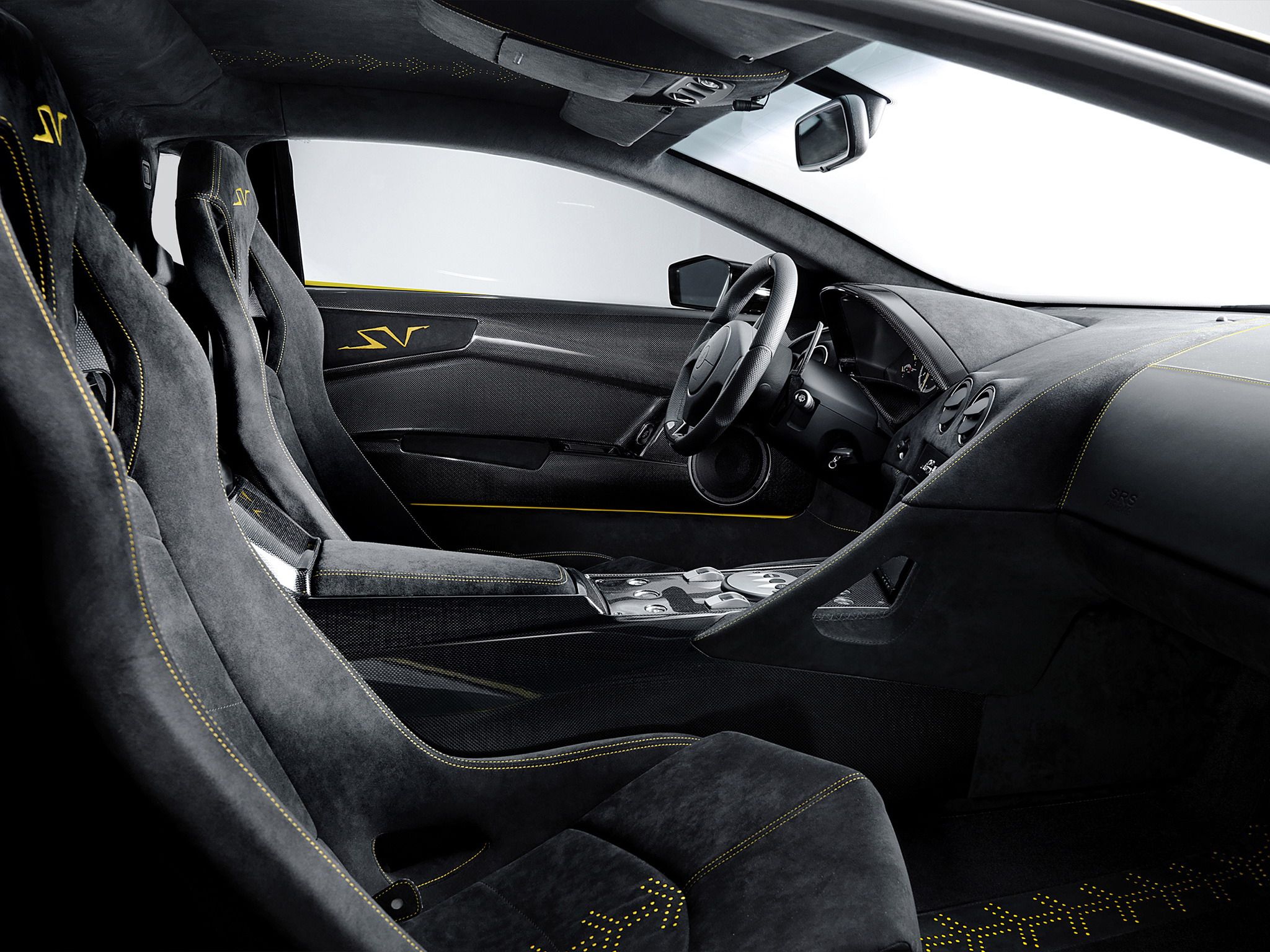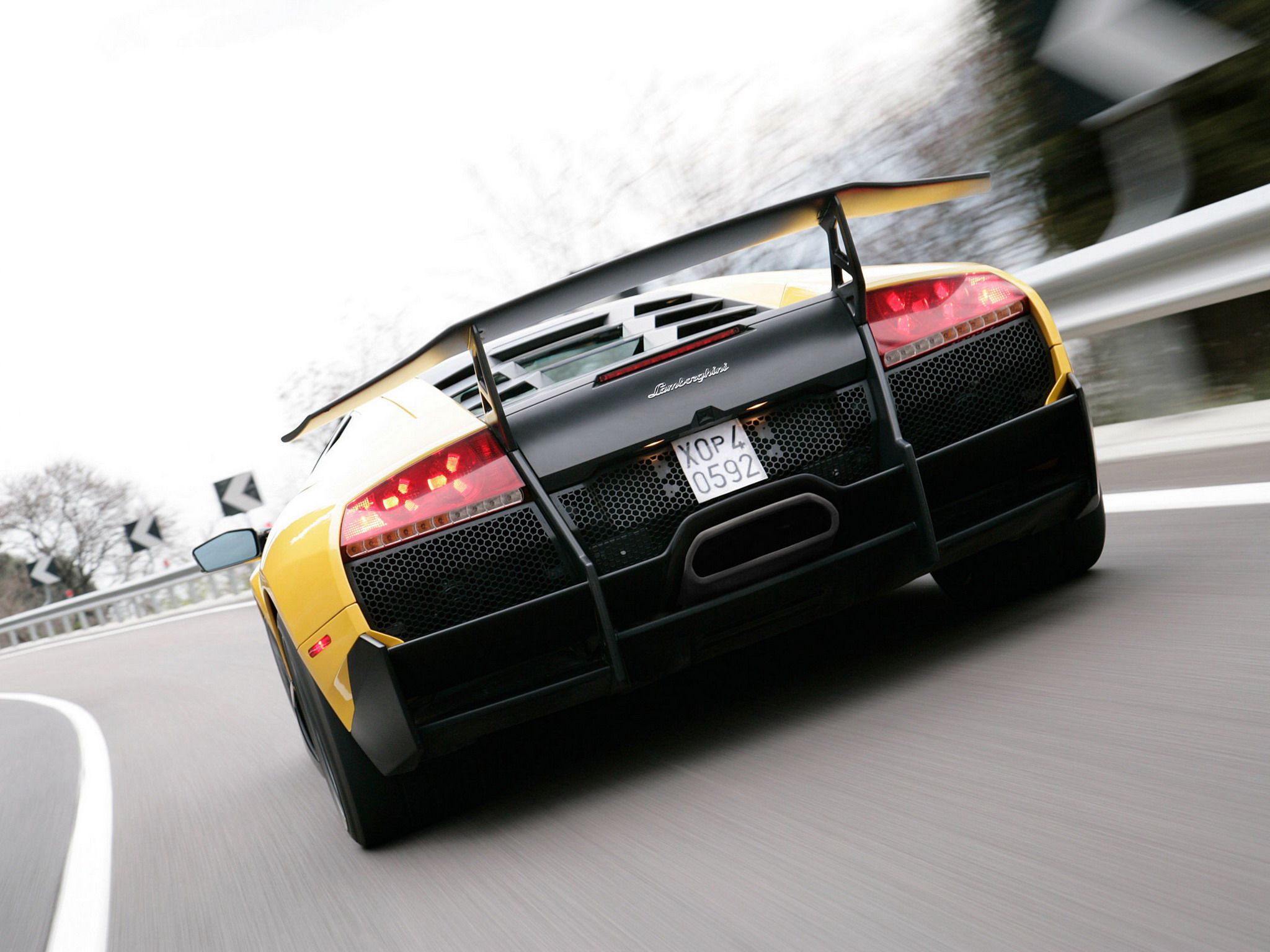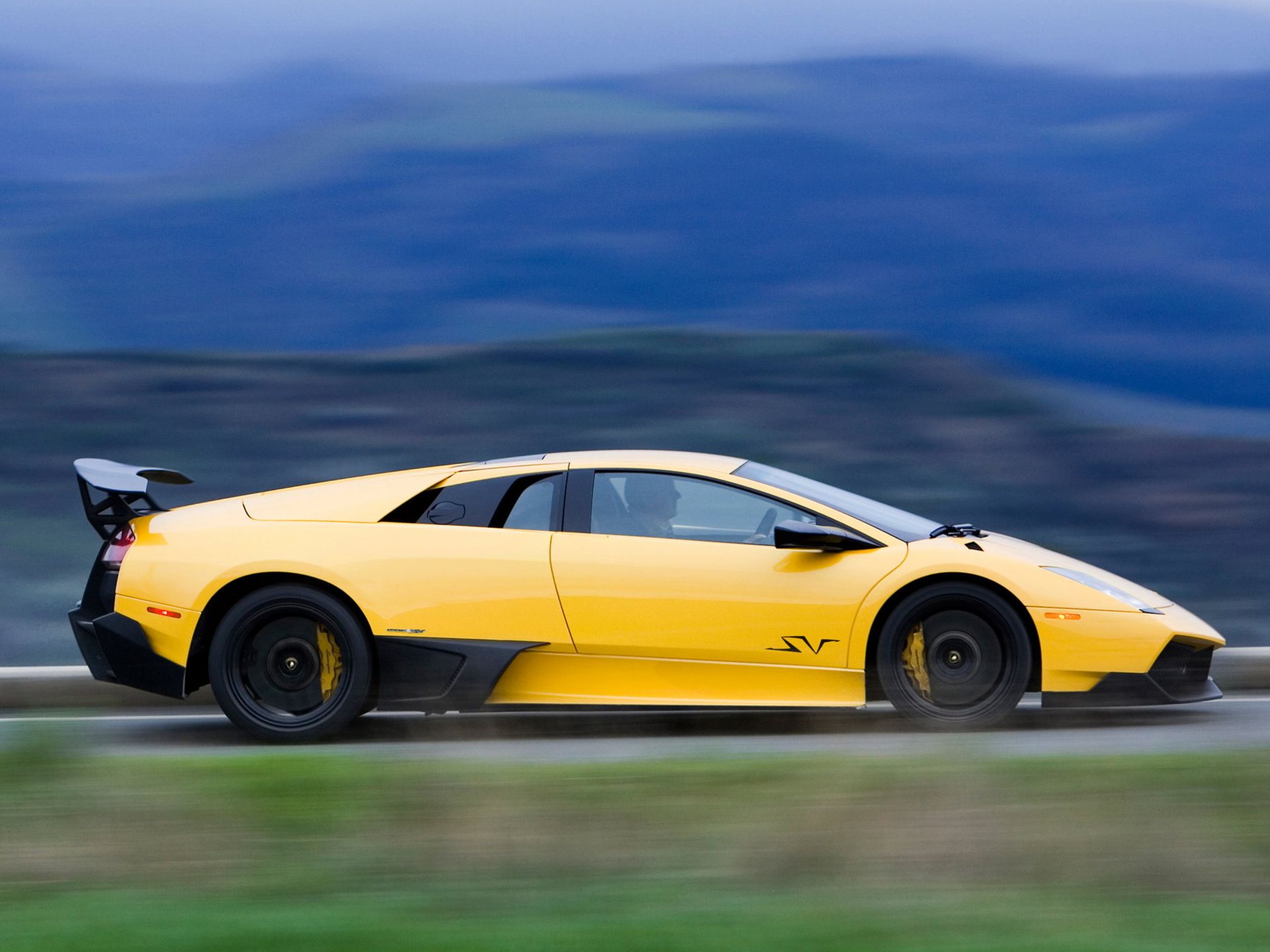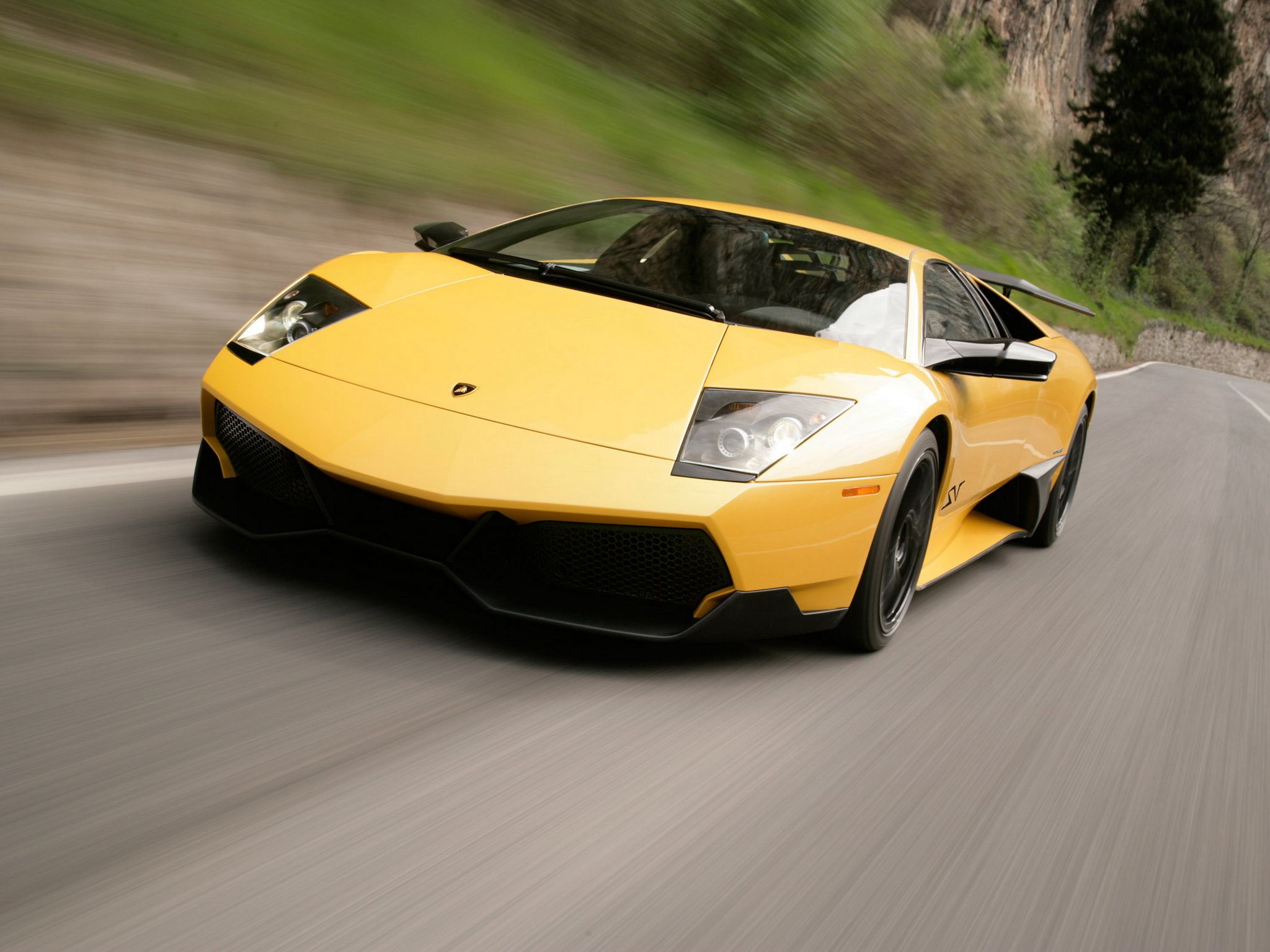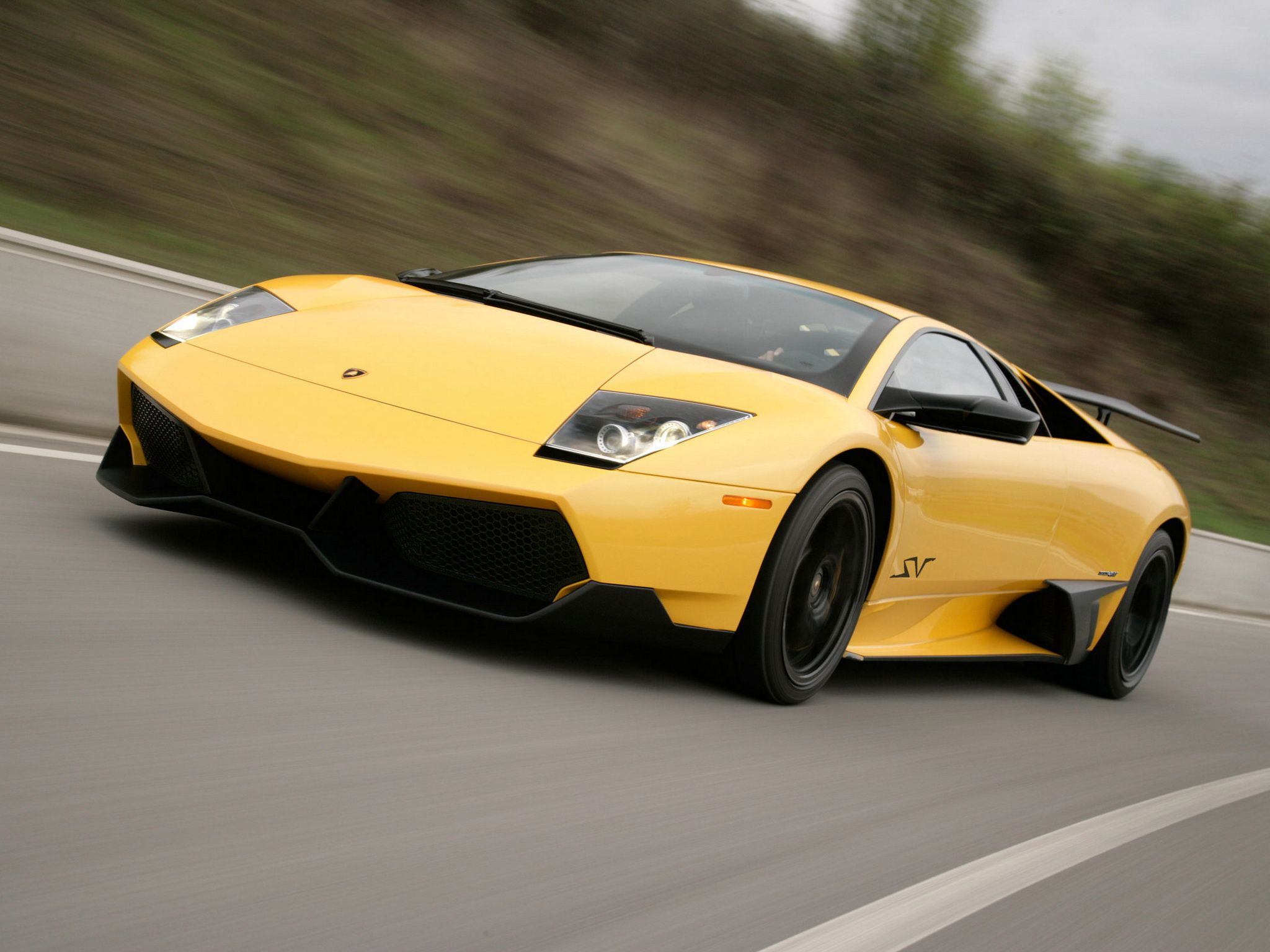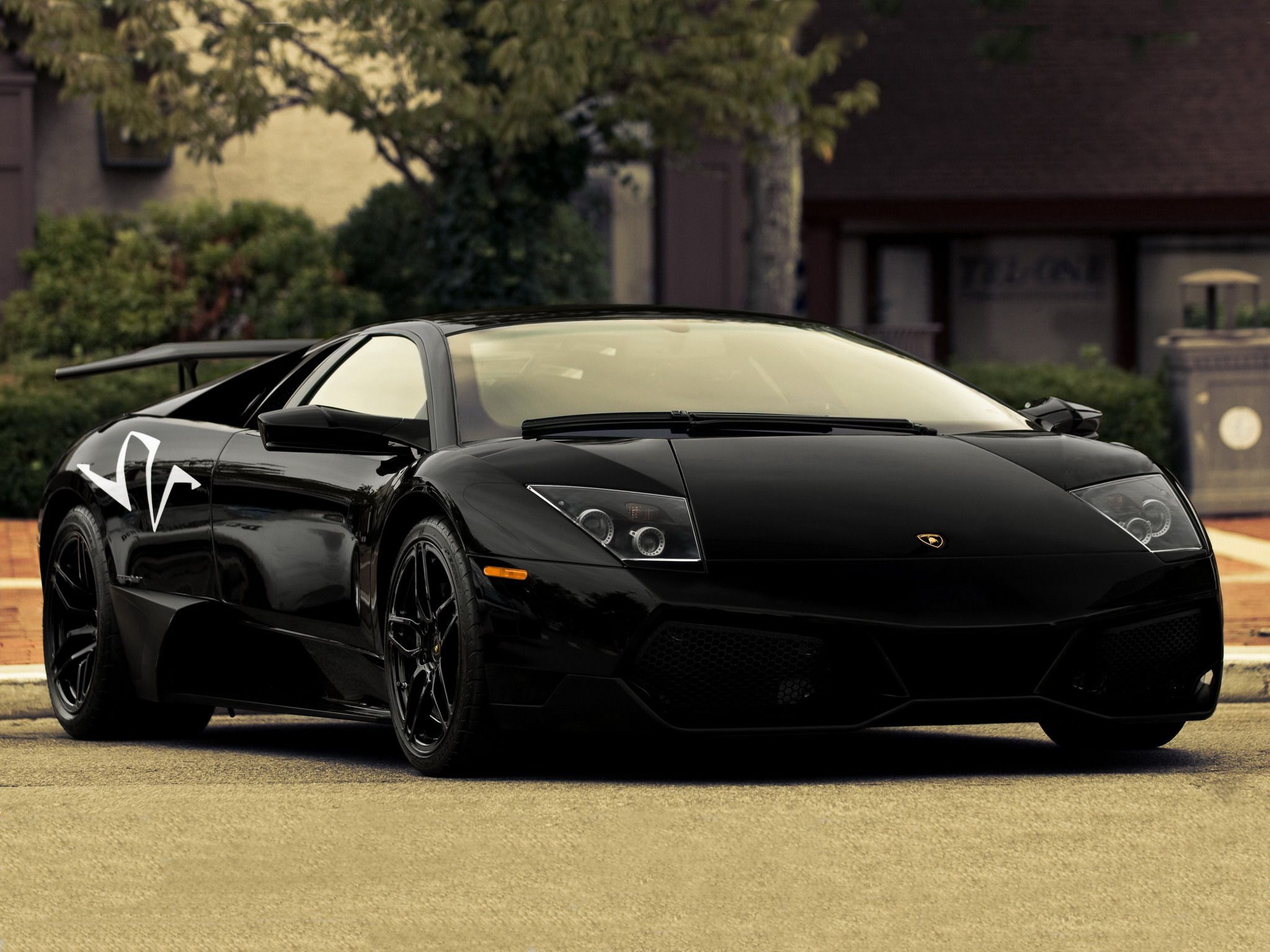How would you design a better supercar->ke177? If I were handed the spec sheet, I’d keep things simple – add power, cut weight, and make it look like it could jump between dimensions. Funny enough, that’s basically what Lamborghini->ke44 did with the final iteration of the Murcielago->ke1267. Dubbed the LP 670-4 SuperVeloce, this limited edition uber-bull is framed as a purer, more track-oriented interpretation of the original, with upgrades and modifications performed from tip to tail, including the aerodynamics, chassis, engine, transmission, and interior. The result? More speed.
The biggest contributor to the velocity increase is a drastically reduced curb weight, which is the result of extensive integration of everyone’s favorite composite material, carbon fiber. Paired with the most powerful engine ever fitted to a Murcielago, the LP 670 is a true ground-bound rocket ship.
“The new Murcielago LP 670-4 SuperVeloce is the systematic continuation of our brand philosophy,” said Stephan Winkelmann, President and CEO of Automobili Lamborghini, in a press release when the car was first released. “It is more extreme and uncompromising than virtually any other automobile.”
Sounds promising. But how does it fair amongst the top-end performance vehicles of today?
Continue reading to learn more about the 2009 – 2010 Lamborghini Murcielago LP 670-4 SuperVeloce.
2009 - 2010 Lamborghini Murcielago LP 670-4 SuperVeloce
- Make: Array
- Model: 2009 - 2010 Lamborghini Murcielago LP 670-4 SuperVeloce
- Engine/Motor: V12
- Horsepower: 670 @ 8000
- Torque: 486 @ 6500
- Transmission: Lamborghini six-speed
- [do not use] Vehicle Model: Array
History And Background
The LP 670 is based on the Lamborghini Murcielago, which was produced between 2001 and 2010. The successor to the iconic Lamborghini Diablo, the Murcielago was the first new model produced after the brand was sold to the Volkswagen Group in 1998. The name means “bat” in Spanish, taking after a famous fighting bull from the late 1800s.
The LP 670 edition of the Murcielago debuted in 2009 at the Geneva Motor Show, with the SuperVeloce (SV) designation used to identify the LP 670 as a faster, more hardcore range-topping variant. Lamborghini typically creates an SV edition at the end of a given model’s production run, with previous SV’ed models including the Miura and Diablo.
In 2011, the Murcielago was replaced by the Aventador, but not before some 4,099 units were produced. Meanwhile, the LP 670 enjoyed a far more limited production cycle (see the Prices section for more).
Exterior
The Murcielago was originally styled by Luc Donckerwolke, a Peruvian-born Belgian who headed Lambo’s design department between 1998 and 2005. One look is all you need to confirm the model as classic Lambo – the stance is incredible low and wide, with deep-cut angles and sharp edges, like a speed wedge ready to dice through the corners as quick as you dare.
Per tradition, the LP 670 manages to kick those characteristics into overdrive.
In front is a brand-new fascia, with the lower splitter section made from carbon fiber and finished in matte-black. The are vertical elements connecting the lower section the upper, and the functional side intakes were made bigger to help cool the brakes. The wedge-shaped headlights maintain that very slick-looking black backing. Keeping the chin scrape-free is a standard lift system, which raises the car by 1.8 inches to help maneuver around speed bumps, angled pavement, and more than $0.15 of stacked change.
On the sides, the sills and intakes were also painted matte black to match the fascia, while the doors open upwards like the Countach. Mounted behind the cabin is a redesigned transparent engine cover, which gets a very cool hexagonal pattern running the length of it. Made from polycarbonate with a carbon-fiber framework, there are three levels of slats opening outwards towards the rear for enhanced engine cooling.
The taillights get Y-shaped turn signal graphics, which are also used on the base Murcielago, Reventon, and Gallardo LP 560-4. Between the taillights is a carbon-fiber insert, below which sits aluminum mesh with additional hexagonal patterning. Lambo says the mesh was laser-cut and uses a Teflon coating to protect against heat.
A single, hexagon-shaped exhaust tip makes the fun noises. There’s also a new, two-level diffuser, once again made from carbon fiber.
Lambo offered two options for the rear wing. The standard LP 670 spoiler offered improved downforce compared to the base Murcielago, but if you were looking for maximum high-speed stability, there was also something called the Aeropack Wing. Although it knocked a few mph off the car’s top speed, the larger carbon spoiler provided significantly greater downforce, making it the right choice for track enthusiasts.
Another cool feature of the car’s exterior were “intake funnels” that rose from the rear pillars when the engine needed additional cooling. Lower running temps saw the funnels sitting flush with the bodywork.
In the corners are “Ares” aluminum-alloy forged wheels with a five twin-spoke design. Paint options included Giallo Orion, Arancio Atlas, Bianco Isis, Grigio Telesto, and Nero Aldebaran. There was also the option for matte hues like Bianco Canopus and Nero Nemesis.
Exterior Dimensions
|
Wheelbase |
2665 MM (104.73 Inches) |
|
Overall length |
4705 MM (184.91 Inches) |
|
Overall width |
2058 MM (80.88 Inches) |
|
Overall height |
1135 MM (44.61 Inches) |
|
Front track |
1635 MM (64.26 Inches) |
|
Rear track |
1695 MM (66.61 Inches) |
|
Ground clear. |
11 MM (0.43 Inches) |
|
Front overhang |
1090 MM (42.84 Inches) |
|
Rear overhang |
950 MM (37.34 Inches) |
|
Weight |
1565 KG (3451 LBS) |
|
Distribution |
42/58% front / rear |
Interior
Lambo says the LP 670’s interior reflects the car’s “purist and minimalist” philosophy. Basically, that boils down to less luxury and a greater focus on the task at hand.
For starters, there’s no radio or nav system to be found, although Lambo did offer to install one as an option. However, the press release says it best – “At the end of the day, the music in a Murcielago comes from the engine compartment.”
Hugely bolstered sport buckets made from carbon fiber and covered in black Alcantara provide seating for two, while the softer, more forgiving seats from the base Murcielago were offered as a no-charge option.
More Alcantara and carbon fiber can be seen everywhere you look, including the headliner, which mimics the seats with Y-shaped perforations that expose an inlaid backing material in the same color as the exterior paint.
Dividing the two seating positions is a wide center tunnel complete with a standard “oh-crap” handle for the passenger.
Drivetrain
The party piece is a mid-ship, longitudinally mounted, naturally aspirated 6.5-liter V-12 with sequential fuel injection. The block and heads are made from aluminum, and the cylinders are mounted at 60 degrees. There are four chain-driven cams that are variably controlled, and the intake manifold operates in three stages. There’s dry sump lubrication to ensure adequate oil supply under heavy load, plus 12 liters of oil capacity chilled by a heat exchanger located along the left flank. The electronics, which were internally developed by Lamborghini, use separate processors for each cylinder bank.
On the base Murcielago, this powerplant creates a heady 640 horsepower. However, thanks to modifications to the intake system, an optimized valvetrain, and increased valve travel, the LP 670 makes (you guessed it) 670 horsepower, 30 more than the base model. Peak power hits at a head-spinning 8,000 rpm, while peak torque (487 pound-feet) arrives at 6,500 rpm. Redline is 8,250 rpm.
So what about acceleration? A run from standstill to 100 km/h (62 mph) takes 3.2 seconds, about two-tenths quicker than the standard Murcielago. Top speed is upped to 212 mph, which is 2 mph faster. Throw on the larger, drag-heavy Aeropack Wing, and you’ll still get 209 mph.
The standard transmission is a sequential, electro-hydraulic six-speed automatic “e-gear” box, which makes for quicker shifts than the standard model. Lambo also offered an old-school six-speed manual as a no-cost option, which came complete with a classic open gate shifter.
Max stick is provided by the permanent AWD system, which uses a viscous coupling to send up to 35 percent of available torque to the front wheels.
Handling And Chassis
Underneath the wild aero is a tubular steel frame and copious carbon fiber. The transmission tunnel and floor, for example, are both composite, and come attached to the frame thanks to rivets and high-strength adhesives. The roof and exterior door panels are steel, while the rest of the body is carbon fiber.
To help cut weight, Lambo’s engineers probed every nook and cranny. To begin, the LP 670 uses high-strength steel for its framework, which not only cuts 44 pounds, but also increases torsional rigidity by 12 percent. The front fenders, rear side panels, and even the casing for the third brake light received a “modified” carbon fiber material. The movable rear spoiler was replaced with a fixed unit, the exhaust was reworked, and the clutch was lightened. Inside, Alcantara replaces leather for the upholstery, and the infotainment gear was ditched.
In total, 72.6 pounds was cut from the chassis and exterior, 74.8 pounds was cut from the interior, and 72.6 pounds was cut from the drivetrain, reducing the final curb weight to 3,451 pounds – a 220-pound difference.
While certainly helpful when it comes to acceleration, the diet really shows in the corners. Around 58 percent of the car’s weight is centered over the rear axle, which means it’s also quite lively, despite being AWD.
There is a double-wishbone suspension set-up with adjustable coilover dampers in all four corners. The dry sump lubrication also means the V-12 is mounted closer to the ground, which makes the center of gravity even lower.
The wheels are measured at 18x8.5-inches in front and 18x13-inches in the rear, with Pirelli P-Zero Corsa rubber providing the footprint. Tire sizing is measured at 245/35R18 in front and 335/30R18 in the rear.
Finally, carbon ceramic brakes, which came as options on the 640, are standard on the 670, cutting even more weight. The discs are 15-inches across, and use six-piston calipers.
Drivetrain Specifications
|
Type |
V-12 60 degree, light-alloy block, Longitudinal central rear mounted, permanent four-wheel drive with viscous traction system |
|
Cyl.Capacity |
6496 cc / 396 ci |
|
Bore & stroke |
88,0 x 89,0 mm |
|
Compression Ratio |
11,0:1 |
|
Power |
670 HP @ 8,000 RPM |
|
Torque |
486 LB-FT @ 6,500 RPM |
|
Transmission |
Lamborghini six-speed + reverse e-Gear |
|
Top speed |
342 Km/h / 212 Mph |
|
0 - 100 Km/h |
3.00 seconds |
|
0 - 200 Km/h |
10.80 seconds |
|
0 - 300 Km/h |
30.80 seconds |
|
1/4 Mile |
10.90 sec. reaching 129 Mph |
Prices
The Murcielago LP 670 was originally limited to 350 units. However, only 186 units ended up making it through production before Lambo booted it to make way for the Aventador.
Pricing started at $450,000 before options – roughly $100,000 more than the base LP 640. These days, expect to pay around $500,000 for the privilege of ownership.
Competition
Ferrari 430 Scuderia
Originally revealed at the 2007 Frankfurt Motor Show, the Scuderia used the same formula as the LP 670 for maximum driving excitement, cutting 220 pounds from the curb weight and extracting an additional 15 horsepower from the powerplant. Routing the go to the rear axle is a semi-automatic transmission. A run to 62 mph takes roughly 3.6 seconds, while top speed is rated at 202 mph.
Read the full review here.
Porsche 911 (997 GT3 RS)
Introduced in 2006, the 997 GT3 RS took after the RSR racer pounding it out in endurance races at Sebring and Le Mans. More grip comes thanks to a wider track and enhanced downforce, while up to 500 horsepower was possible from the upgraded 4.0-liter engine. Curb weight tipped the scales at a feathery sub-3,000 pounds.
Read the full review here.
Conclusion
I’m one of those enthusiasts that loves Lamborghinis for being crazy – crazy to drive, crazy to look at, crazy to hear. And although it’s AWD and made by Audi, I genuinely feel like the LP 670 still ticks those boxes. First of all, it definitely looks the part thanks to all the upgraded aero. The interior is spartan and focused, and if you put the loud pedal to the floor, you’re met with hyperspace acceleration. It’s still a bonkers machine, and at just 186 units total, pretty rare as well.
Any way you slice it, this thing is a monster, so don’t say I didn’t warn you if you see its teeth.

